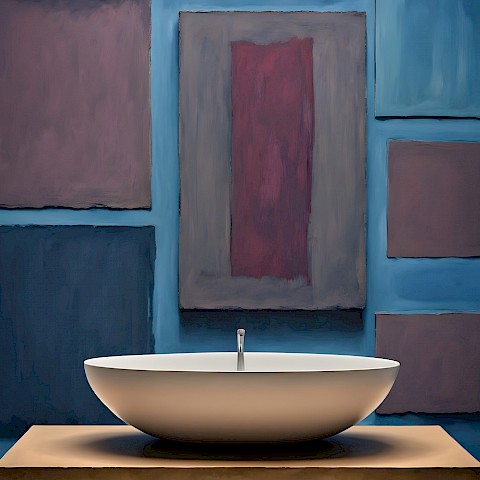|
03 IV 2025 |
9. Petworth 1828-37
332 - Pilate washing his Hands | |

| ||
|
Exhibited in 1830 with the text from Matthew XXVII, 24: And when Pilate saw he could prevail nothing, but that rather a tumult was made, he took water and washed his hands before the multitude, saying, I am innocent of the blood of this just person; see ye to it. The first of three paintings of Biblical subjects that owe a lot to Rembrandt, already represented with works of this general character at the National Gallery from its opening in 1824; the others are 'Shadrach, Meshach and Abednego', exhibited in 1832 (see No.B39), and the unfinished Christ driving the Traders from the Temple', also of about this date (Tate Gallery 5474). The renewed interest in figures, which, though relatively small in scale, dominate the composition, their rich costumes and the types of the Jewish priests, as well as the dramatic use of light and the thick, heavily worked paint all point to Rembrandt, to whom Turner had already paid tribute in 'Rembrandt's Daughter', exhibited in 1827 (Fogg Art Museum, Harvard University). Turner uses the fall of light to pick out the tiny figures of Pilate and the statue of Dagon in the background, but unlike Rembrandt the picture glows with colour as well as light. This picture and the similarly Rembrandtesque 'Jessica', so different from the landscapes shown the same year, provoked the virulence of the critics. The Literary Gazette for 8 May 1830 called it wretched and abortive' and followed this up the next week by quoting a wag 'saying, he fancied "a pilot washing his hands" was a fine marine subject'. The Morning Chronicle for 3 May more interestingly linked its attack with an early account of Turner's practice of completing his pictures on the Academy's Varnishing Days. Speaking of this picture and 'Orvieto' the critic wrote, 'We understand that when these pictures were sent to the Academy, it was difficult to define their subject; and that in the four or five days allowed (exclusively, and, therefore, with shameless partiality to A's [Associates] and R.A's to touch on their works, and injure as much as possible the underprivileged) they have been got up as we see them. They still partake of the character of conundrums.' An image generated by an AI Machine Learning Model Property of the artist. | ||
